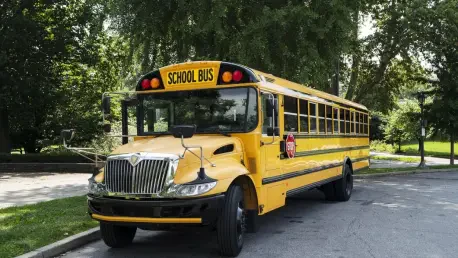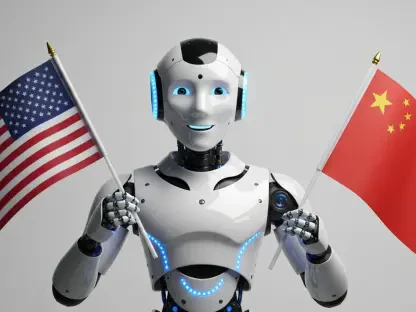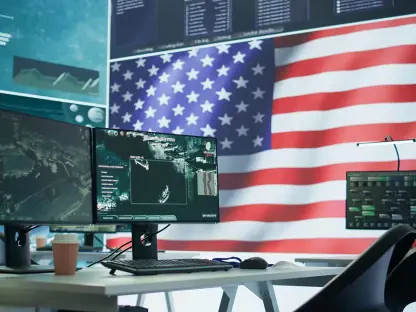I’m thrilled to sit down with Donald Gainsborough, a renowned political savant and leader in policy and legislation, who heads Government Curated. With his deep expertise in navigating complex systems and driving innovative solutions, Donald brings a unique perspective to the transformation of school transportation. Today, we’ll dive into how school buses are evolving into high-tech machines, exploring the impact of cutting-edge tools on safety, efficiency, and the daily experiences of students, drivers, and parents, as well as the challenges that come with these advancements.
How have school buses transformed in recent years with the integration of advanced technology?
Over the past decade, school buses have shifted from being just a mode of transport to becoming sophisticated hubs of technology. We’re seeing features like GPS tracking, live cameras, and digital student check-in systems become standard. These aren’t just upgrades; they fundamentally change how buses operate, making them safer and more efficient. For drivers, navigating unfamiliar routes is no longer a daunting task, and for students, the ride feels more secure with real-time oversight. It’s a complete reimagining of a system that, for so long, relied on paper maps and minimal oversight.
What specific technological tools are helping drivers manage their routes and responsibilities more effectively?
Tools like turn-by-turn navigation on tablets and automated student manifests are game-changers. Drivers now have precise directions at their fingertips, which is especially helpful in urban areas with complex street layouts or rural districts with sprawling routes. These systems also track when each student boards or exits, reducing the chance of errors. I’ve heard from many drivers that this tech takes a huge weight off their shoulders, allowing them to focus on driving safely rather than juggling paperwork or worrying about missing a stop.
In what ways has this new technology improved the experience for parents?
Parents are benefiting immensely from real-time tracking apps that let them see exactly where their child’s bus is at any given moment. It’s similar to tracking a rideshare or food delivery, but with the added peace of mind of knowing their kid is safe. Features like individualized ETA alerts also mean less waiting in bad weather or uncertainty during delays. Feedback has been overwhelmingly positive—parents feel more connected and informed, which builds trust in the school system’s transportation services.
Can you elaborate on how safety features like live cameras are enhancing security on school buses?
Live cameras, both inside and outside the bus, are a powerful tool for safety. They help monitor student behavior in real time, which can prevent issues from escalating. For instance, if there’s a disruption, a dispatcher or even a principal can view the feed and address it immediately, sometimes even speaking directly to students. There have been cases where footage has helped resolve disputes or provided critical evidence during incidents, ensuring accountability and protecting everyone on board.
How does this wave of technology contribute to cost savings or operational efficiency for schools?
The financial benefits are significant. Optimized routing software cuts down on fuel consumption by mapping the shortest, most efficient paths. It also reduces wear and tear on buses and can decrease the number of vehicles or drivers needed. Beyond that, schools have noticed savings in administrative time—fewer calls from worried parents thanks to tracking apps, and predictive maintenance alerts that prevent costly breakdowns. These efficiencies add up, allowing districts to redirect funds to other priorities.
How is this technology addressing the ongoing shortage of bus drivers?
The driver shortage is a nationwide challenge, and this tech is helping by making the job more appealing. Navigation tools reduce the stress of learning new routes, while cameras and real-time support from dispatchers provide a safety net when dealing with student behavior. Some districts have reported that these tools make the role seem more modern and manageable, attracting younger candidates or retaining experienced drivers who might otherwise retire. It’s not a complete fix, but it’s a strong step toward easing the burden.
What are the biggest concerns surrounding the collection and storage of data from these high-tech buses?
Data privacy is a major concern, and rightfully so. With GPS locations, video footage, and student tracking, there’s a lot of sensitive information being generated. The risks include potential breaches or misuse, like data being sold to third parties. Schools and tech providers are working to address this by storing data securely, often separately from other student records, and implementing strict encryption. Many also have policies to delete old data after a set period. But it’s an evolving issue, and vigilance is key to ensuring trust isn’t broken.
What is your forecast for the future of school bus technology?
I believe we’re just scratching the surface. In the next decade, I expect to see even deeper integration of artificial intelligence for predictive routing and behavior monitoring, possibly even autonomous bus systems in controlled environments. We’ll also likely see more focus on sustainability, with tech to optimize electric bus fleets. However, the challenge will be balancing innovation with affordability and privacy. If done right, these advancements could redefine school transportation as a seamless, safe, and integral part of the educational experience.









